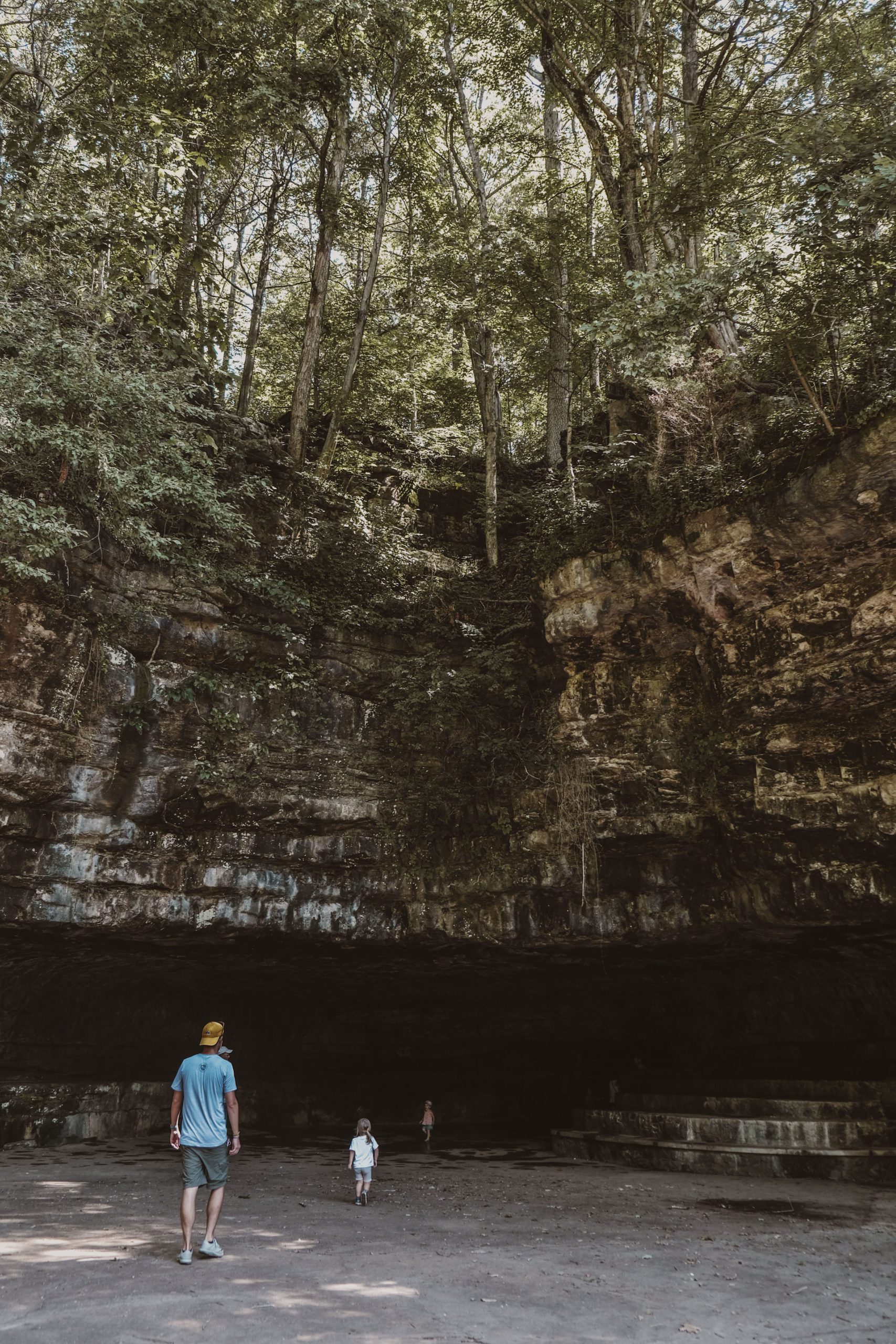I was eight months pregnant and desperate to get out of the house. By early September, we were on month six of the new socially-distanced normal; summer had come and gone with no brunches, pool parties, or baseball games; and it was a month into a new school year that was happening entirely from my dining room table. I needed to get out – before this baby came, while I still could.
There’s a cluster of State Parks within a 35-mile ring of Nashville, seven in total, that make for a very easy outing for local residents; you can head over for a hike without having to plan your entire day around it. Cedars of Lebanon State Park, about 33 miles east of downtown, was our last of these to visit.
Cedars of Lebanon (locally, pronunciation is more akin to Leb-nin, much to Colin’s dismay) is a park for all types of park-goers, particularly the ones looking for community in the outdoors. There are nearly 150 campsites as well as a group lodge with two separate dormitories that sleeps up to 80 people. Other event spaces – an assembly hall, gazebo, day cabin, and picnic pavilions – are available to reserve, making it a popular place to host weddings and parties. At over 9,000 acres (much of it State Forest), it’s also one of the largest parks in the system, so there’s still plenty of room to stretch. Oh, and there’s also a swimming pool.



My mom-planning was on its A-game for our visit during an extra hot Labor Day Weekend. A picnic lunch was packed, along with ample water and extra clothes (a potty-training necessity). After a quick stop at the Visitor’s Center for a map and stamp on our daughter’s State Parks Passport booklet (ask for one from any park office!), we headed deeper into park territory for a short hike.
The park is named for its cedar trees, but there’s another natural feature that makes the park’s ecosystem truly unique; the abundance of limestone has created glades from the small amount of soil reaching the surface that has built up year after year. According to the Parks Department, these glades are home to nineteen rare plant species that don’t grow anywhere else in the world. You can witness this firsthand on the .4-mile Limestone Sink Trail. It’s the shortest loop in the park but provides a thorough overview of the natural setting. You’ll walk over large limestone boulders and can hike down into a couple different sinkholes.



Four months later, just a couple weeks ago, we returned to Cedars of Lebanon on a mission for a longer day hike. This time, we tried the 1.9-mile Cedar Forest Trail, a longer version of our short Fall hike and a mostly-flat walk through the limestone glades and cedar forest. The official trail head is deeper in the park, near the lodge and cabins, but you can also easily access just across the road from the Visitor’s Center near the crosswalk. On recommendation from a Park Ranger, we spent this winter hike searching for the various greens of moss that blanket the ground.
Jackson Cave is another unique feature of the park, serving as part of an underwater system for groundwater that links many of the area’s sinkholes. The cave is located just behind Cedar Forest Lodge, near the Nature Center and trailhead to the Cedar Run Trail. Catch a scheduled tour if you can.
SADIE FORD HERITAGE FARM
The biggest surprise to me in this State Park journey is that the parks aren’t just about nature preservation; they’re deeply connected to the history and culture of the land they preserve, as well. The Sadie Ford Heritage Farm and Cultural Art Center is just that. Located on Murfreesboro Road just south and opposite of the park’s main entrance. it’s the area’s last surviving farm prior to the park’s official establishment in 1955. Today, it is run as an authentic early-to-mid-century farm for an educational experience of living history.





When you first enter the property, you’ll pass the 1920s-era farmhouse once owned by two local school teachers, Delta and Sadie Ford. Unfortunately during our holiday visit, the building was closed, but the space serves as a museum of artifacts on the park area’s settlement and cultural history. Other buildings on the property include a milking barn and livestock barn that serve as the backdrop to programming on historical farming practices.
It’s a shame we didn’t get to experience the space as intended, as an immersive historical experience. The space is clearly a work in progress as several structures were under renovation. Special programs and events can be found on the park website or farm’s Facebook page, but it’s still worth a visit just to roam the property, no matter the day or season.
CHECKLIST:
Date: September and December 2020
Count: 9 of 56
Must-See: Most of the trails will highlight the area’s unique geological features; the Sadie Ford Farm offers a unique experience on the area’s cultural history.
GETTING THERE:
From Nashville, follow I-40 E towards Lebanon. For the easiest route, take exit 238 towards US-231 S (Murfreesboro Road) and follow for about 18 miles until the park entrance is on your left. To save a few minutes and miles, take I-40 E exit 232A to TN-109S. This turns into TN-265E/Central Pike, and follow until you reach Murfreesboro Road. Turn right, and the park entrance is less than a mile down on the left.

Click here to read more of our adventures in Tennessee State Parks!


